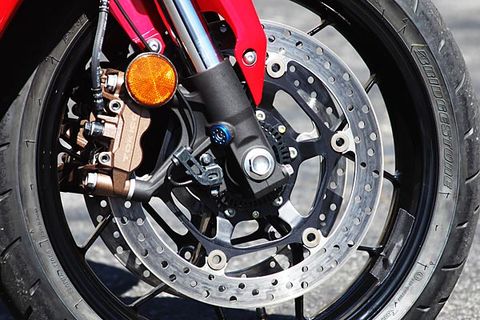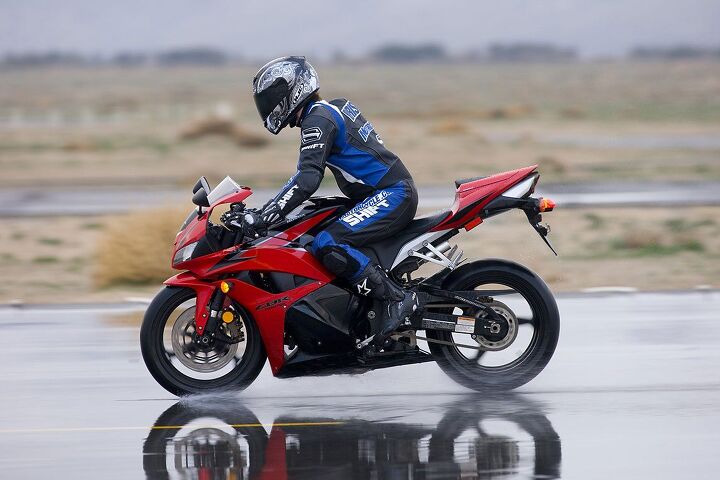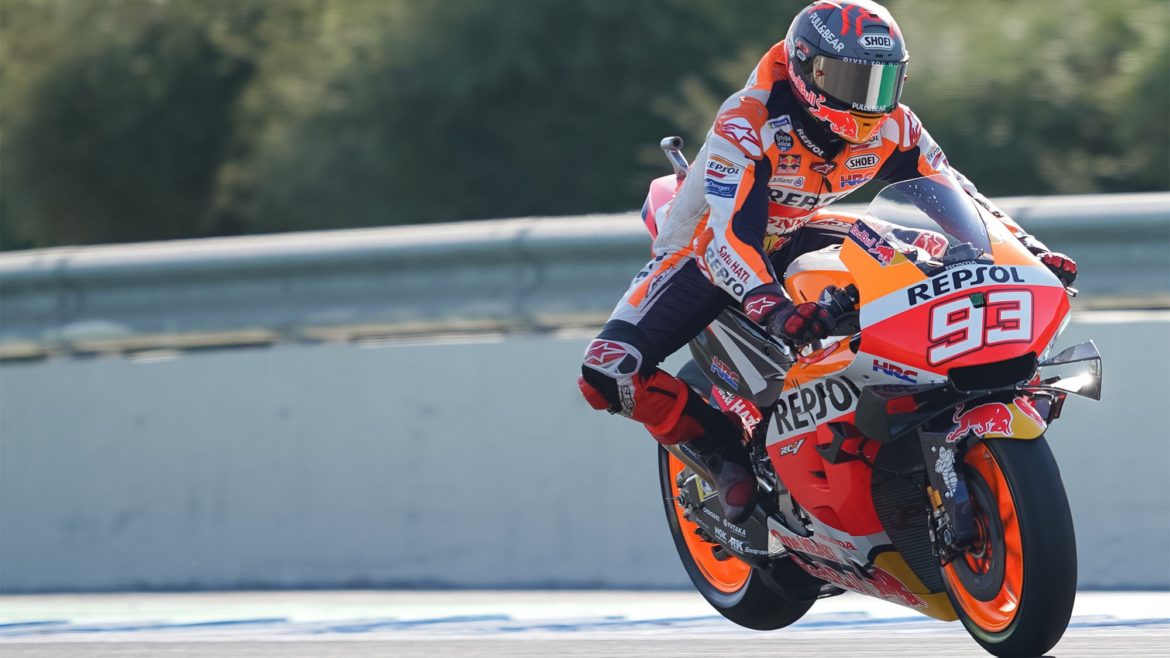Braking is perhaps one of the most important aspects of riding a motorcycle safely. As such, the braking systems found on motorcycles have gone through a lot of advancements.
One such advancement is ABS or Antilock Braking System. We live in a unique era where motorcycles are available with and without ABS. This has given rise to the ABS Vs Non ABS motorcycle debate and this debate is exactly what we will settle today.
Motorcycle ABS: Overview + Pros & Cons
ABS isn't a new technology and has been around for quite some time now. A rudimentary version of it can be traced back to 1908 when it was used in railway carriages. By the 1920s, it began to be used in aircraft. It was in 1928 that a version of the technology was patented for the first time.
The first recorded use of ABS in motorcycles was in 1958 when a Royal Enfield Super Meteor motorcycle was fitted with ABS. It proved quite effective as well but it was seen as far too impractical at the time to be put into mass production. This was mostly because it was a purely mechanical system and the cons outweighed the pros for such a system on a motorcycle.
These days, it has become far more common with almost all the latest motorcycles above 125cc engine displacement featuring ABS as a standard option.
So, how does ABS work?
The basic aim of this system is to prevent wheel-lock.
This is when the wheels are no longer rotating under braking and are instead sliding along the road surface.

This reduces the control you have over your motorcycle significantly. Modern ABS consists of various parts which work together to prevent wheel lock. The three main parts found on a typical ABS unit are an ECU, wheel speed sensors, and hydraulic valves and controllers that connect to the braking system.
The ECU, or electronic control unit, observes the wheel speed and compares that to the speed of the vehicle. If the speed of the wheel starts dropping considerably, it means that the wheel is about to be locked and the ECU releases the brakes temporarily. As soon as the wheel starts speeding up, which means the wheel has regained grip, the ECU applies the brakes again and this process can be repeated around 15 times each second.
In motorcycles with ABS both in the front and rear wheels, also known as dual-channel ABS, the speed difference between both wheels is observed and if there is a major discrepancy between the two under braking, the ECU will kick in and momentarily increase or decrease the brake input as required to keep the motorcycle in control.

This brings us to the next question associated with ABS. Is ABS worth it on a motorcycle? Absolutely Yes! Under panic braking or when the surface of the road becomes slippery, even professional riders can misjudge their braking and end up crashing. ABS goes a long way in preventing such crashes and it enhances the safety of the motorcycle considerably.
The chances of a fatal crash on an ABS-equipped motorcycle can be around 30% lower. This statistic is further strengthened by the fact that accident insurance claims numbers are 20% lower for motorcycles with single-channel ABS and 31% lower for motorcycles with dual-channel ABS.
Non ABS Motorcycle: Overview + Pros & Cons
At the other end of the spectrum is a motorcycle without ABS. The brakes are fully under the control of the rider. While experienced riders can try and mimic an ABS, the human reaction time is far too slow to come anywhere close to ABS. Motorcycles without ABS generally tend to have smaller engines and even those are becoming rare these days.
Even if you are a pro rider, we highly recommend choosing a motorcycle with ABS as it is far safer, especially in the event of emergency braking.

One avenue where a non-ABS motorcycle does bear some positive fruit is in the learning process. Properly braking, especially in an efficient and controlled manner, is a skill that takes time and practice to develop. Since an ABS motorcycle will do most of the hard work for you, the chances of learning all the fine nuances of braking are lower. This won’t matter much if you plan to ride only ABS-equipped motorcycles.
However, there can be scenarios where you won’t have access to this technology. This is usually the case with classic motorcycles. This is also something you might want to think of if you are looking to pursue motorcycle racing as a career. Braking is a very important skill, perhaps the most important skill in racing, and ABS can hamper you a bit in learning this skill to its full extent.
One final area where ABS would be a detriment would be in stunt riding. There is a way around it though. Choose a motorcycle where ABS can be turned off when you do need to do a stoppie or wheelie.
ABS Vs Non ABS Motorcycle (Differences Compared For Riders)
To better understand why ABS motorcycles are better than their non ABS counterparts, here is a direct comparison between the two in a few different use cases.
Stopping Distance
The most immediate difference is in the stopping distance. To get the shortest stopping distance, the brakes have to be applied in the most efficient manner possible. The best way to do this is by ensuring that you are right on the limit without going over it.
While it is possible to do this on a non ABS motorcycle for very short periods of time and infrequently, an ABS-equipped motorcycle will be able to do it in a more sustained manner and with much more regularity.

Multiple studies have shown that a motorcycle with ABS can come to a complete and safe stop over a much shorter distance when compared to a motorcycle without ABS. This translates to a much safer riding experience as, under emergency braking, you will have a much better chance of stopping and avoiding obstacles.
Braking In A Corner
Cornering on a motorcycle is one of the most nuanced aspects of riding. Braking stability is one of the most important requirements for that. Any imbalance can either lead to the front washing out from underneath you or a high-side, which is one of the most dangerous types of crashes you can have on a motorcycle.
With ABS, even if you misjudge the braking, the motorcycle will stay under control and the tires will have grip throughout the corner. This will allow you to go around corners faster, safer, and with much more confidence.
Control Over Motorcycle
The only safe way of riding a motorcycle is when you are in complete control. If it is the other way around, and it is the motorcycle that is controlling you, then it is the perfect recipe for disaster. While becoming proficient in throttle control and balance is relatively easy, braking is a bit more complicated.
Braking while riding a motorcycle is highly dynamic and the same amount of braking input can produce varying effects depending on the speed, the temperature of the tires, tire wear, the temperature of the road surface, grip levels, weight distribution, and many other factors.
Even the most proficient rider can sometimes make mistakes while braking that can have dire consequences. An ABS-equipped motorcycle will allow you to be in control at all times.
Extra Safety For Minimal Weight & Expense
ABS adds a bit of weight, and the price tag becomes heftier but only by a slight margin. Both of these might seem like an unnecessary detriment at first, but the benefits far outweigh any minor drawbacks that might be there.
On average, a typical ABS unit adds about 3.5 lbs to the motorcycle, which isn't all that much. As for the cost increase, it isn't a big margin and the more important thing to consider is you cannot put a price tag on safety.
Safety Under Wet & Slippery Conditions
One of the best use cases for ABS is when the grip level is low. This can occur after a sudden downpour, when the road is dirty, or if it is really cold. Things will get even worse if there is ice on the road. Under such treacherous conditions, even riding very slowly can result in a crash and ABS becomes indispensable.
This is also the biggest proof that ABS on motorcycles is not a gimmick but is something that actually works. All you have to do is check out one of the countless videos people have made demonstrating how much more control you can have with ABS when the grip is low.
Safety While Riding
Even during regular riding under perfect conditions, ABS can be a lifesaver as the need for emergency braking can occur at any time. The technology behind ABS has come so far that even the basic versions found on inexpensive motorcycles do a really good job at keeping you safe.
Can You Put ABS On A Non ABS Motorcycle? (Is It Worth It?)
Given how advantageous it is to have ABS on a motorcycle, it can be a bit disheartening to already own a motorcycle without ABS. The question then becomes, can you put ABS on a non ABS motorcycle? The short answer is yes, but in practice it is quite complicated. The first issue you will stumble upon is finding a compatible aftermarket ABS unit for your motorcycle.
This is easier said than done as there are so many different motorcycle models. Aftermarket ABS isn’t something that can be manufactured in a one size fits all manner. For it to work properly, everything from the diameter of the brake disks and tires to the type of hydraulic system used for the brake calipers, has to be taken into account.
As these can vary among different makes and models, finding a bespoke ABS unit that perfectly fits your motorcycle can be a real hassle.
Let’s say you are able to procure an ABS unit with all the right specifications. Installing it won’t be easy. You will need really skilled hands since a modification to the brake’s hydraulic lines will be required, and this is something you would not want to mess up. Even a small mistake can lead to the motorcycle becoming far more unsafe than it originally was, which ultimately defeats the purpose of having ABS in the first place.
Having said all of this, installing ABS on a non ABS motorcycle is difficult but not impossible. It can be done provided you are willing to go the extra mile to ensure that everything is done perfectly. So, is all this added trouble worth it? You can easily come to a conclusion by asking yourself these questions.
People Also Ask (FAQs)
Does ABS affect steering?
ABS has no direct effect on steering. Motorcycles are almost universally steered mechanically, and there is no direct connection between the ABS and the steering. However, it can affect the feedback you get from the motorcycle. An ABS-equipped motorcycle will feel different under braking especially when a lot of input is applied. However, it does not take long to get used to this.
At what speed does ABS work?
The exact parameters vary with the specific make and model of the ABS unit, but they usually get activated above 10 mph. Even though ABS will stay activated above that, its efficacy can decrease as it crosses a certain limit. This upper limit is constantly evolving and is usually around 75 mph but can be much higher, especially on motorcycles with higher engine capacities.
Is ABS warning light a big deal?
This usually means that the ABS is malfunctioning or disengaged. The most common reason could be that the ABS is turned off. Try turning it on. If the light is still glowing, it could point to an issue with the ABS itself such as a sensor malfunction. It is advisable to get the ABS checked out by qualified personnel as soon as possible. In the meantime, it is safe to ride the motorcycle slowly, so there is no need for panic braking.
Why does ABS kick in?
ABS kicks in when the wheel is about to lock or when one of the wheels starts losing grip. This usually happens when a large amount of braking force is applied or if there isn’t adequate grip on the road surface.
Does ABS adversely affect fuel economy?
A typical ABS unit will only increase the weight of a motorcycle by about 1.5% to 2%. The effect this weight increase has on the overall fuel economy is very low and is nothing when compared to the safety benefits of ABS.
Conclusion
When ABS initially began to be adopted widely in the mainstream motorcycle market, it may have been little more than a gimmick and a marketing tool. However, over the last decade, it has gone through a lot of development and it has now become a serious safety feature and an indispensable tool as far as rider well-being is concerned.
It is now one of those things you can say yes to with your eyes closed. If the choice ultimately boils down to ABS vs non ABS motorcycle, go for the former without giving it a second thought.

